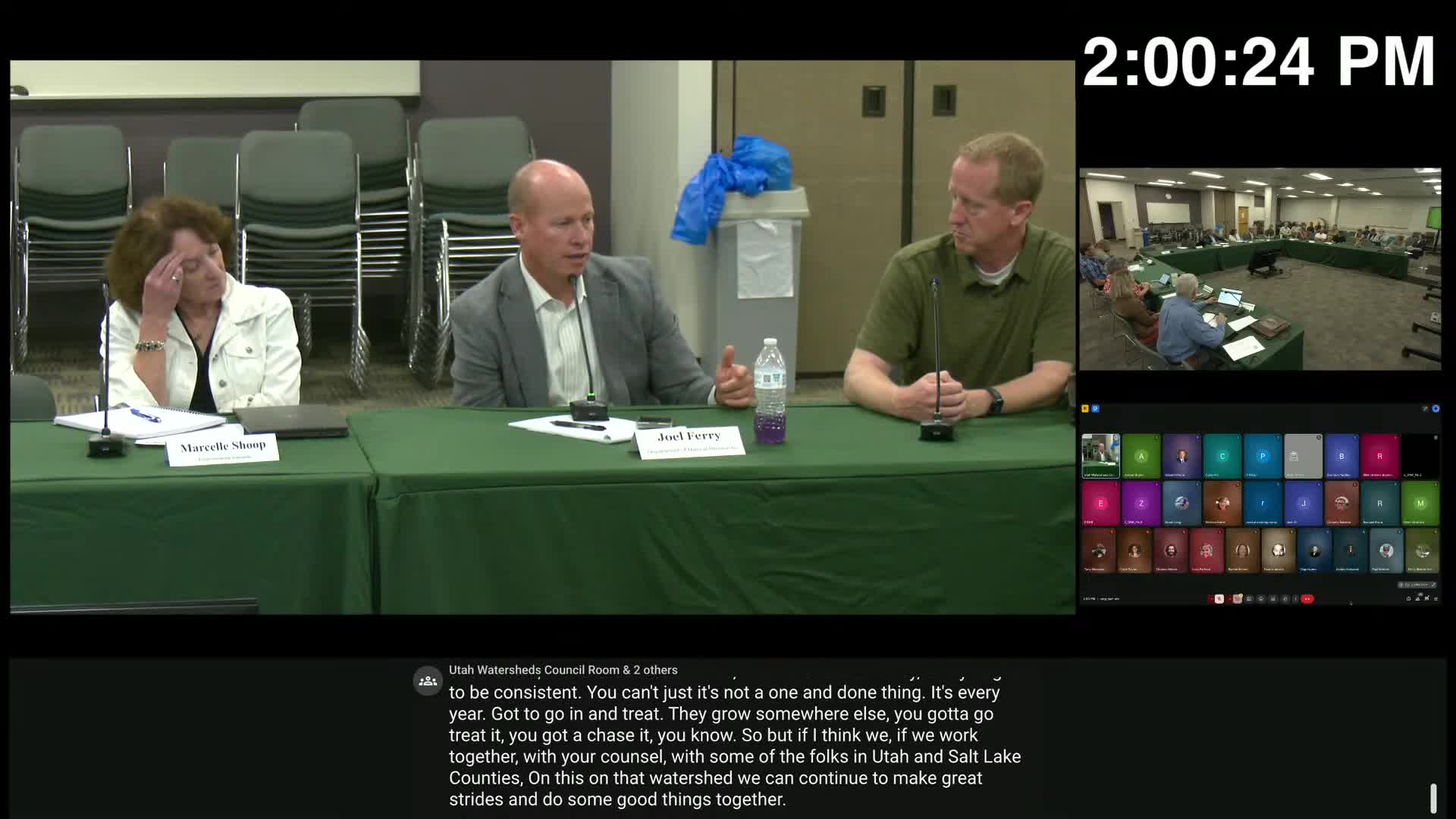Utah councils strategize on phragmites removal for water conservation efforts
July 11, 2025 | Utah Watersheds Council, Boards and Commissions, Organizations, Utah Executive Branch, Utah
Thanks to Excel Chiropractic and Scribe from Workplace AI , all articles about Utah are free for you to enjoy throughout 2025!

This article was created by AI using a video recording of the meeting. It summarizes the key points discussed, but for full details and context, please refer to the video of the full meeting. Link to Full Meeting
Council members highlighted the dual benefits of eradicating phragmites: restoring ecosystems and conserving water. "As we eradicate and remove it, you're talking about actually more than just an ecosystem restoration. You're also talking about a water conservation measure," one member emphasized, commending the ongoing efforts to tackle this invasive species.
The discussion also underscored the importance of collaboration among various watershed councils. Laura Briefer from the Jordan River Watershed Council expressed gratitude for the coordination with the Utah Lake Watershed Council, noting the interconnectedness of their efforts. "We would love to continue to collaborate and find things that we can work on together," she stated, reinforcing the need for a united front against phragmites.
Monitoring post-treatment plant upgrades was another key topic. Experts proposed deploying sondes—devices that can collect water quality data every five minutes—to establish baseline measurements for nutrients and other critical parameters. This data will be essential for assessing the effectiveness of treatment efforts.
The meeting also touched on the role of agriculture in managing phragmites. Representatives from the agricultural sector shared insights on transforming infested lands into productive areas, showcasing innovative approaches to weed management. "Land managers, particularly those in the agricultural industry, can play a significant role in dealing with noxious weeds," one member noted.
As the meeting concluded, the urgency of addressing phragmites was clear. With every watershed in the Great Salt Lake Basin facing similar challenges, the council's commitment to collaboration and innovative solutions will be crucial in safeguarding Utah's water resources and ecosystems for the future.
Converted from Utah Watersheds Council 7/10/2025 meeting on July 11, 2025
Link to Full Meeting
Comments
View full meeting
This article is based on a recent meeting—watch the full video and explore the complete transcript for deeper insights into the discussion.
View full meeting

